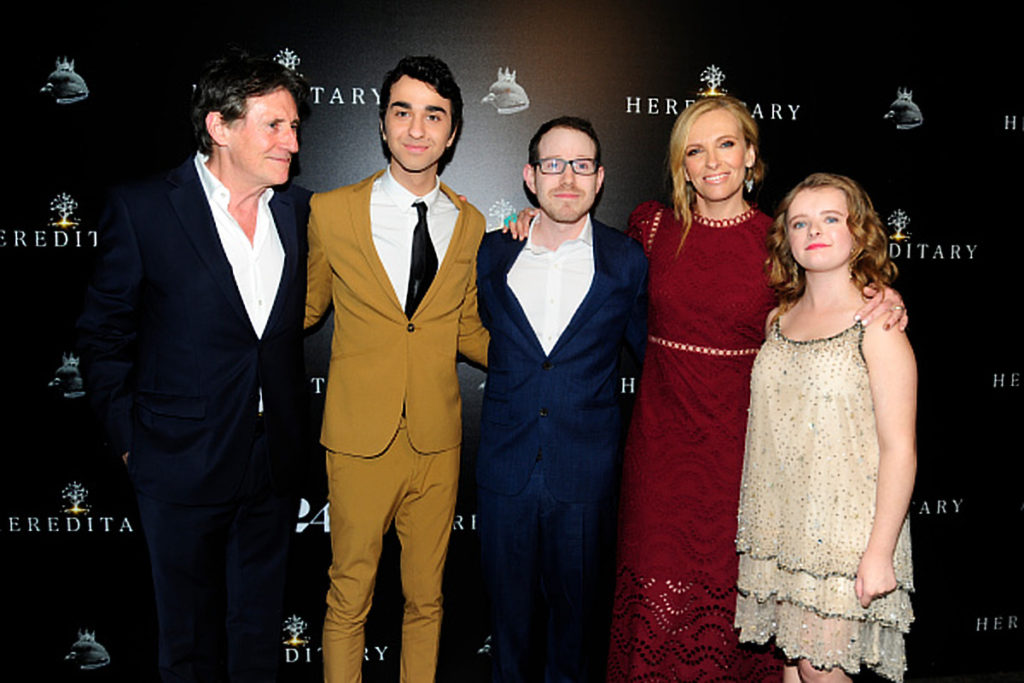Hereditary is the latest horror film from A24, the studio behind The Witch and It Comes at Night, and has been generating massive buzz around the festival circuit. Those who had the chance to catch it in one of the festival screenings have been calling it one of the scariest movies in years. It is the latest in a long line of films attempting to lay claim to the throne of “this generation’s The Exorcist”. Many have tried to live up to that title and many have failed. Does Hereditary quite hit that bar?
The Scariest Film Since the Exorcist?
Like many horror films, it is best to go into Hereditary knowing as little as possible. For that reason, there will be zero plot points discussed in this review. Instead, we are going to paint some broad strokes. To start, this is very much a “slow-burn” horror film. It takes its time to develop the characters, build the relationships, and get the audience invested in the story. However, there are little unsettling tidbits sprinkled throughout that will make you uneasy and fill you with a constant sense of dread. The weight of the film gradually gets heavier and heavier on the audience until, eventually, a breaking point is reached and the payoff begins. Much like the two aforementioned films, The Witch and It Comes at Night, Hereditary proves that it is possible to have smart storytelling in horror films. Every detail in the story has a reason for being there, even if it may seem irrelevant at the time. It just goes to show how meticulously plotted out this movie is and how much potential Ari Aster has a screenwriter.
Hereditary is one of the most well-acted horror films of the last few years. This was highlighted by a powerhouse performance by Toni Collette, as well as an outstanding showing by Alex Wolff. Collette plays the mother, Annie, and her portrayal of a woman drifting further and further into madness is downright Oscar-worthy. Wolff plays the son who, to put it lightly, goes through a lot in this movie. He has been popping up in a number of films lately with this being his strongest performance to date.
The same way that the taut narrative showed off Ari Aster’s potential as a screenwriter, his decision-making behind the camera established his potential as a director. This film did not rely on jump scares or false set-ups. Instead, Aster decided to go with shocking imagery, dread-inducing premises, and subtle wides. For example, there will be scenes where Aster chooses to utilize a steady wide shot. There may be something terrifying in the corner of the frame but there is no loud accompanying noise to tell the audience “This is the part where you should be scared! Do you see it? Do you?” Instead, the image will linger there, quietly, for a solid few seconds before we cut to a different scene or a different shot. If you missed it, then that’s on you.
This is a technique that is so rarely used in modern horror, yet it is so simple and effective. It adds a sense of anxiety and dread to the film because the audience is constantly on edge wondering whether or not there is someone (or something) lurking in the corner. Eyes are constantly darting from one end of the screen to the other in anticipation of where the next scare will come from. This technique was recently utilized to perfection by Mike Flanagan in Ouija: Origin of Evil (2016) and David Robert Mitchell in It Follows (2014), both of which are a must watch for any horror fan.
Ari Aster also showed off a deep understanding for the subjectiveness of horror. He realizes that, when something isn’t explicitly shown on screen, your mind will automatically create the most terrifying image that you can conceive. James Wan put this theory to use in The Conjuring (2013). In Wan’s film, there is a scene where one of the young girls, played by Joey King, sees a figure in the doorway of the bedroom she shares with her sister. You see her face fill with fear, meanwhile, her sister doesn’t see what she sees and neither does the audience.
Without even putting a figure on screen, Wan crafted one of the most terrifying scenes in the film. It invoked the fear of the unknown. Not everyone will picture the same image, but everyone will picture what is most terrifying to them. For this reason, Aster’s restraint about what to show on screen in this film was a brilliant decision on his part. Hereditary was a masterfully directed film and, by the time the credits rolled, it was clear that Ari Aster has established himself as a powerful new voice in the genre.
As stated earlier, Hereditary is the latest film to draw comparisons to The Exorcist. The truth is, this is a very different film from William Friedkin’s 1973 fright fest. However, it is fair to say that what The Exorcist did for possession films, Hereditary could do for psychological horror. In that sense, this film is more than deserving of that comparison. Like the horror genre itself, Hereditary is not a film for everybody. However, for those that enjoy the tension and psychological horror of films like The Witch, It Comes at Night, and The Shining and those that enjoy the style of scares delivered in films like The Conjuring and It Follows, Hereditary is one of the best I’ve ever seen in that regard.
Letterboxd Score: 5/5 Stars
Percentage: 96%
This article was originally published on Letterboxd. Follow my Letterboxd page at letterboxd.com/fanreport for more movie related content, including past reviews and various top 10 lists. As always, be sure to check back with LWOS.life for more movie articles and reviews coming your way.
Main Image Credit:

